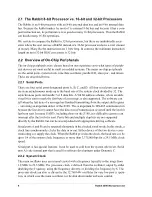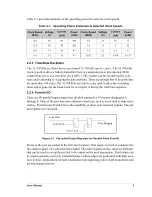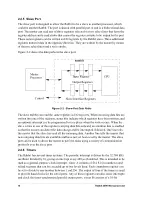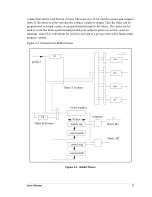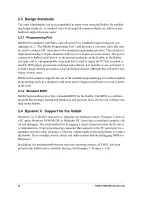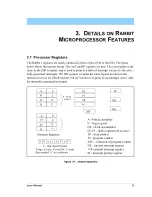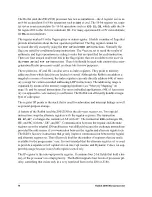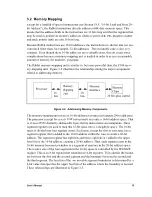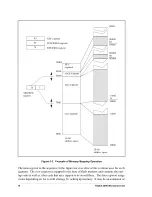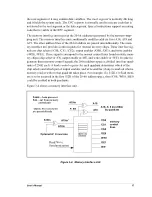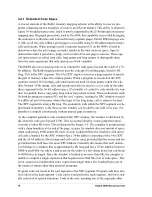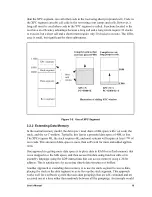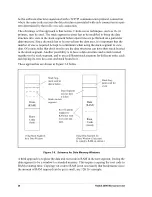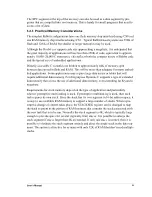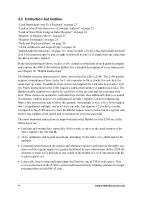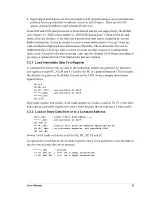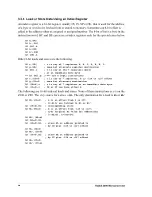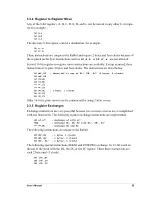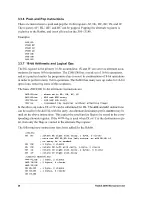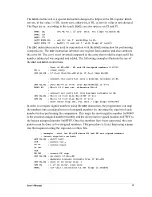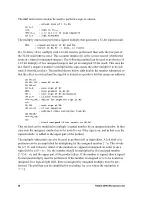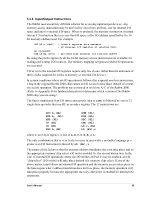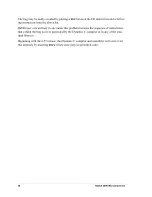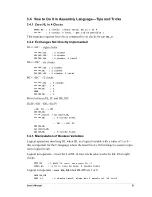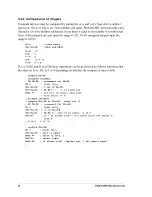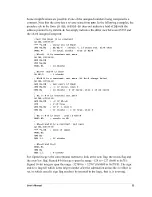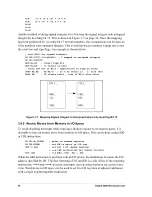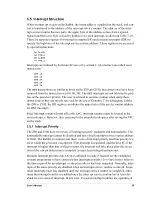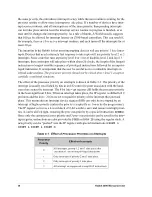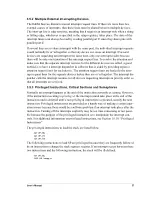
22
Rabbit 2000 Microprocessor
3.3 Instruction Set Outline
“Load Immediate Data To a Register” on page 23
“Load or Store Data from or to a Constant Address” on page 23
“Load or Store Data Using an Index Register” on page 24
“Register to Register Move” on page 25
“Register Exchanges” on page 25
“Push and Pop Instructions” on page 26
“16-bit Arithmetic and Logical Ops” on page 26
“Input/Output Instructions” on page 29—these include a fix for a bug that manifests itself
if an I/O instruction (prefix
IOI
or
IOE
) is followed by one of 12 single-byte op codes that
use
HL
as an index register.
In the discussion that follows, we give a few example instructions in each general category
and contrast the Z80/ Z180 with the Rabbit. For a detailed description of every instruction,
see Chapter 18, “Rabbit Instructions”
The Rabbit executes instructions in fewer clocks then the Z80 or Z180. The Z180 usually
requires a minimum of four clocks for 1-byte opcodes or three clocks for each byte for
multi-byte op codes. In addition, three clocks are required for each data byte read or writ-
ten. Many instructions in the Z180 require a substantial number of additional clocks. The
Rabbit usually requires two clocks for each byte of the op code and for each data byte
read. Three clocks are needed for each data byte written. One additional clock is required
if a memory address needs to be computed or an index register is used for addressing.
Only a few instructions don’t follow this pattern. An example is
mul
, a 16 x 16 bit signed
two’s complement multiply.
mul
is a 1-byte op code, but requires 12 clocks to execute.
Compared to the Z180, not only does the Rabbit require fewer clocks, but in a typical situ-
ation it has a higher clock speed and its instructions are more powerful.
The most important instruction set improvements in the Rabbit over the Z180 are in the
following areas.
•
Fetching and storing data, especially 16-bit words, relative to the stack pointer or the
index registers
IX
,
IY
, and
HL
.
•
16-bit arithmetic and logical operations, including 16-bit and’s, or’s, shifts and 16-bit
multiply.
•
Communication between the regular and alternate registers and between the index reg-
isters and the regular registers is greatly facilitated by new instructions. In the Z180 the
alternate register set is difficult to use, while in the Rabbit it is well integrated with the
regular register set.
•
Long calls, long returns and long jumps facilitate the use of 1M of code space. This
removes the need in the Z180 to utilize inefficient memory banking schemes for larger
programs that exceed 64K of code.
Summary of Contents for 2000
Page 1: ...Rabbit 2000 Microprocessor User s Manual 019 0069 041018 M...
Page 12: ...6 Rabbit 2000 Microprocessor...
Page 46: ...40 Rabbit 2000 Microprocessor...
Page 54: ...48 Rabbit 2000 Microprocessor...
Page 76: ...70 Rabbit 2000 Microprocessor...
Page 96: ...90 Rabbit 2000 Microprocessor...
Page 142: ...136 Rabbit 2000 Microprocessor...
Page 154: ...148 Rabbit 2000 Microprocessor...
Page 170: ...164 Rabbit 2000 Microprocessor...
Page 174: ...168 Rabbit 2000 Microprocessor...
Page 180: ...174 Rabbit 2000 Microprocessor...
Page 202: ...196 Rabbit 2000 Microprocessor...
Page 206: ...200 Rabbit 2000 Microprocessor...
Page 226: ......
Page 230: ...224 Rabbit 2000 Microprocessor...

